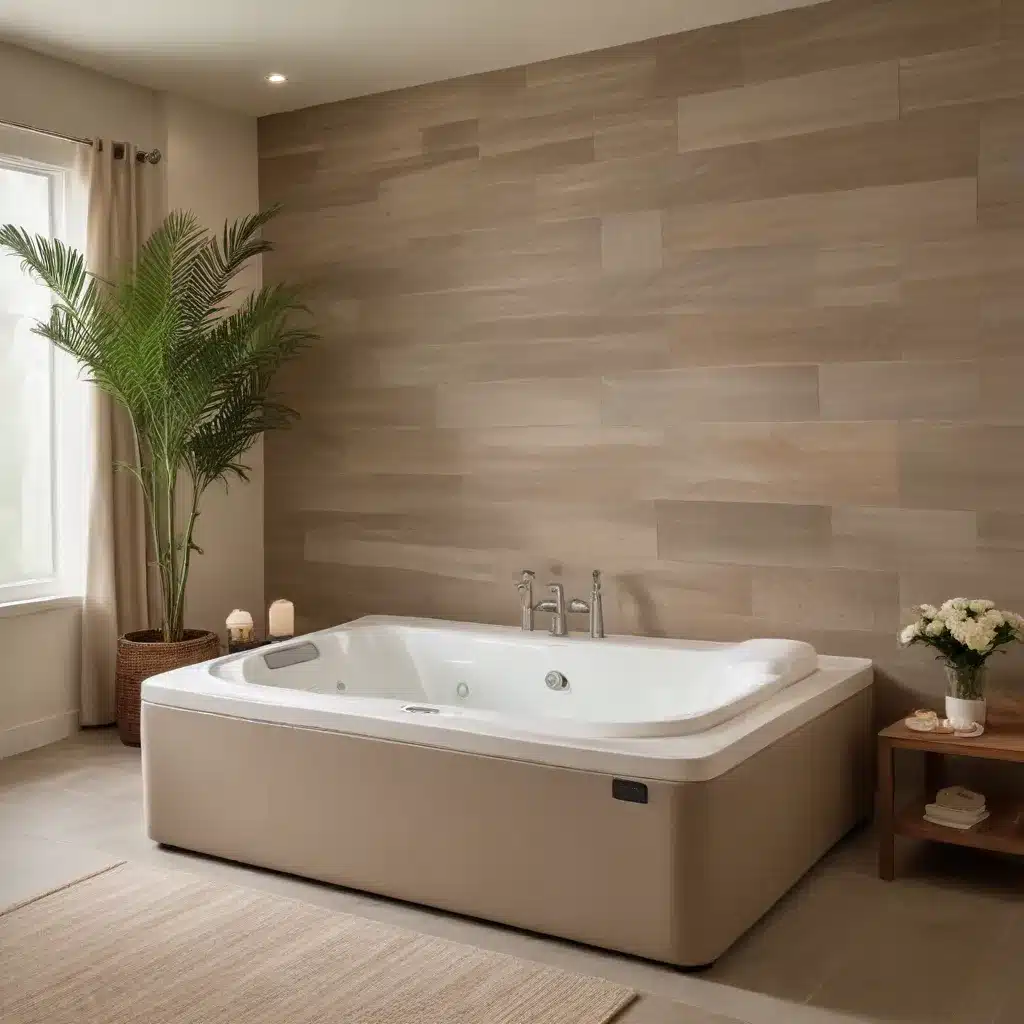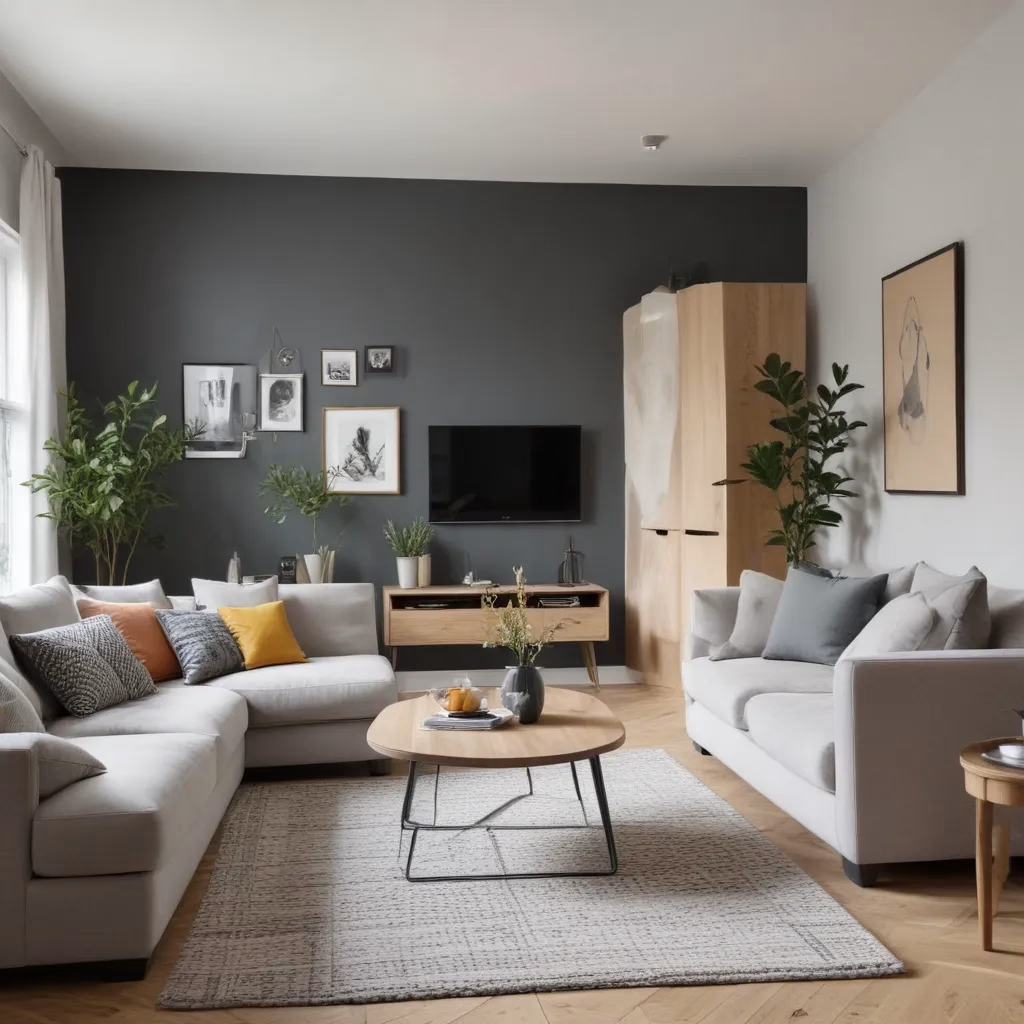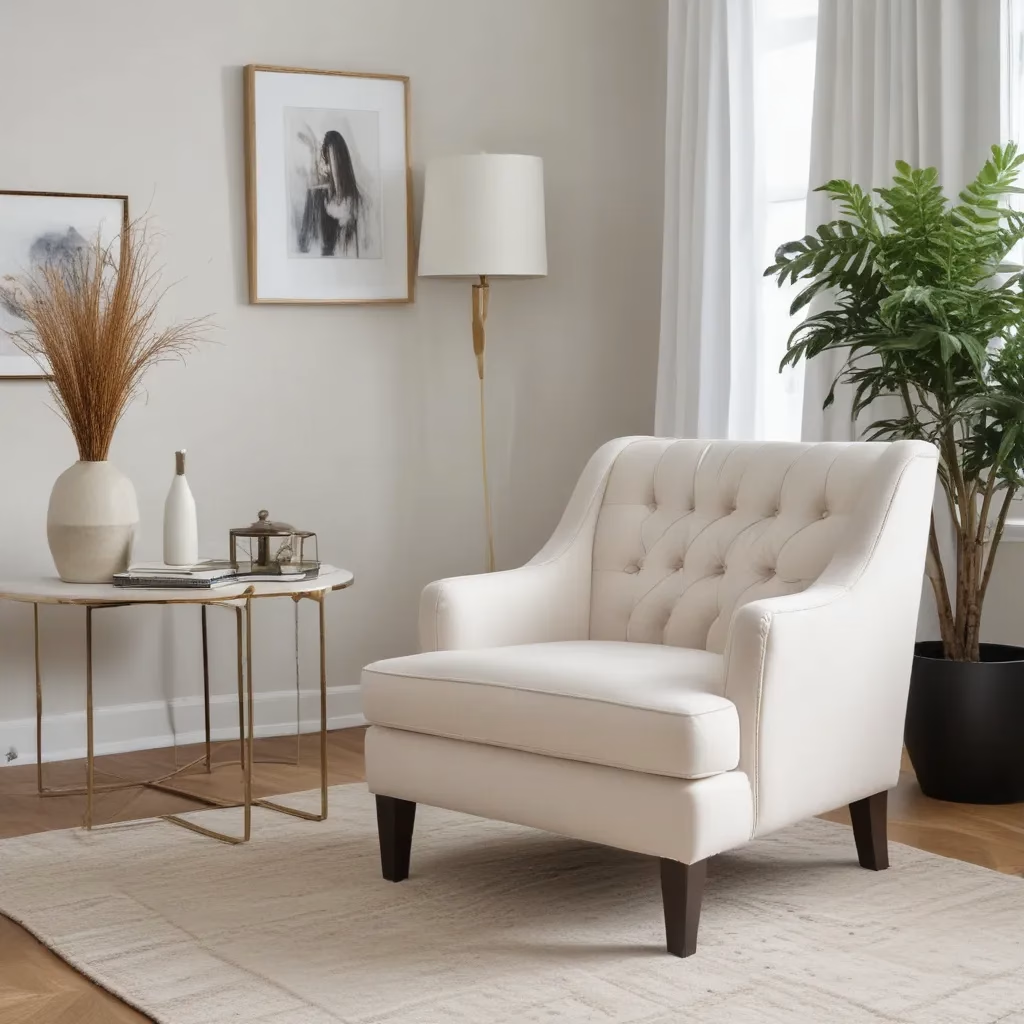
The Art of Sofa Selection
As a furniture specialist with years of experience, I’ve seen firsthand how the right sofa can transform a living space. It’s not just about finding a place to sit; it’s about creating a sanctuary where you can truly relax and rejuvenate. When I guide clients through the sofa selection process, I always emphasize the importance of considering both form and function.
First and foremost, comfort is key. I recommend spending time actually sitting on various sofas to get a feel for their support and cushioning. Pay attention to the depth of the seat, the height of the back, and the firmness of the cushions. What feels comfortable for a quick sit may not be ideal for long lounging sessions, so take your time to really settle in.
Durability is another crucial factor. I’ve seen too many beautiful sofas fall victim to daily wear and tear. That’s why I always advise clients to consider their lifestyle when choosing upholstery. For homes with children or pets, I suggest opting for performance fabrics that resist stains and are easy to clean. Leather can be a great option for longevity, but it requires proper care to maintain its beauty over time.
Upholstery Care: Maintaining Your Comfort Haven
Once you’ve found the perfect sofa, proper maintenance is essential to keep it looking and feeling great for years to come. In my experience, regular care can significantly extend the life of your furniture. Here are some tips I always share with my clients:
Vacuuming is your first line of defense against dirt and debris. I recommend using the upholstery attachment on your vacuum cleaner at least once a week. For leather sofas, a soft brush attachment works best to avoid scratching the surface.
Spills happen, but quick action can prevent permanent stains. I always keep a clean, white cloth on hand to blot spills immediately. Remember, blotting is key – rubbing can spread the stain and damage the fabric. For tougher stains, I’ve found that a mixture of mild soap and warm water works wonders on most upholstery fabrics.
Rotating cushions is a simple yet effective way to ensure even wear. I suggest flipping and rotating cushions monthly, especially in high-use areas. This practice helps maintain the sofa’s shape and prevents premature sagging.
Design Trends: Creating Your Personal Oasis
In recent years, I’ve noticed a shift towards creating more personalized, comfortable spaces in the home. The concept of a “comfort oasis” has gained popularity, with sofas playing a central role in these designs. Here’s how you can incorporate this trend into your own space:
Layering textures is a fantastic way to add depth and comfort to your sofa area. I love combining smooth leather with plush throw pillows or draping a chunky knit blanket over a sleek fabric sofa. This mix of textures not only looks inviting but also provides tactile comfort.
Color choices can significantly impact the mood of your space. While neutral tones remain popular for their versatility, I’ve seen an increasing interest in softer, more soothing hues. Pale blues, sage greens, and warm beiges can create a calming atmosphere that promotes relaxation.
Arrangement is key to maximizing comfort and flow in your living space. I often recommend creating conversation areas by positioning sofas and chairs to face each other. This layout encourages interaction while maintaining a cozy feel. For those who prefer a more laid-back vibe, consider angling your sofa towards a focal point like a fireplace or a view.
The Impact of Lighting on Your Sofa Space
Lighting plays a crucial role in creating the perfect ambiance around your sofa. I’ve found that a combination of different light sources can transform a standard living room into a true comfort oasis. Here’s how I approach lighting in sofa-centric spaces:
Ambient lighting sets the overall tone of the room. I often recommend installing dimmer switches for overhead lights, allowing you to adjust the brightness to suit different moods and times of day. Soft, warm light creates a cozy atmosphere that’s perfect for unwinding on your sofa after a long day.
Task lighting is essential for activities like reading or crafting on your sofa. I love using floor lamps with adjustable arms that can be positioned directly over your seating area. This provides focused light where you need it without disturbing the overall ambiance of the room.
Accent lighting can highlight specific features of your sofa or the surrounding decor. Consider using wall sconces or table lamps to create pools of light that add depth and interest to your space. I’ve found that strategically placed accent lights can make a room feel larger and more inviting.
Accessorizing Your Sofa for Maximum Comfort
The right accessories can elevate your sofa from a simple piece of furniture to the centerpiece of your comfort oasis. Over the years, I’ve developed some go-to strategies for accessorizing sofas that enhance both style and comfort:
Throw pillows are a versatile and affordable way to update your sofa’s look and feel. I recommend selecting a mix of sizes and textures to create visual interest and provide different levels of support. For maximum comfort, choose pillows with down or high-quality foam inserts that maintain their shape over time.
Blankets and throws not only add warmth but also contribute to the overall aesthetic of your space. I love draping a soft, textured throw over the arm or back of a sofa for easy access during movie nights. Choose materials that complement your sofa’s upholstery while providing the level of coziness you desire.
Side tables or ottoman trays are practical additions that enhance the functionality of your sofa area. I often suggest using a mix of materials, such as wood and metal, to add depth to your design. These surfaces provide a convenient spot for drinks, books, or decorative items, making your sofa space more livable and comfortable.
The Importance of Regular Sofa Maintenance
As someone who’s seen countless sofas over the years, I can’t stress enough the importance of regular maintenance. A well-maintained sofa not only looks better but also lasts longer, saving you money in the long run. Here’s my tried-and-true maintenance routine:
Weekly cleaning is essential to prevent dirt and dust from settling into the fabric or leather. I recommend using a soft brush attachment on your vacuum cleaner to gently remove surface debris. For leather sofas, a slightly damp cloth can be used to wipe down the surface, followed by a dry cloth to prevent water spots.
Addressing spills immediately is crucial to prevent staining. I always keep a clean, white cloth nearby to blot spills as soon as they happen. For fabric sofas, avoid using harsh chemicals or excessive water, which can damage the fabric or padding. Instead, use a mild soap solution and blot gently until the stain is lifted.
Professional cleaning every 12-18 months can work wonders for your sofa’s appearance and longevity. I’ve seen sofas that looked ready for replacement come back to life after a professional deep clean. This is especially important for homes with pets or in areas with high humidity, where odors and allergens can build up over time.
Sofa Placement: Maximizing Comfort and Flow
The way you position your sofa can have a significant impact on the comfort and functionality of your living space. Over the years, I’ve developed some key strategies for sofa placement that can help create a more inviting and efficient room layout:
Consider traffic flow when deciding where to place your sofa. I always recommend leaving enough space for people to move comfortably around the furniture. A good rule of thumb is to maintain at least 30 inches of walking space in high-traffic areas.
Create conversation areas by positioning sofas and chairs to face each other. This arrangement encourages interaction and makes the space feel more intimate. In larger rooms, I often suggest using area rugs to define these conversation zones and tie the furniture pieces together visually.
Balance is key when arranging furniture around your sofa. I like to distribute visual weight evenly throughout the room by pairing larger pieces like sofas with smaller accent chairs or tables. This approach creates a harmonious look and prevents the space from feeling lopsided or cluttered.
Sofa Trends: What’s New in Comfort and Style
As a furniture specialist, I’m always excited to see new trends emerge in sofa design. Recently, I’ve noticed some interesting developments that combine style with enhanced comfort:
Modular sofas have gained popularity for their versatility and adaptability. These pieces can be rearranged to suit different needs, making them perfect for modern, flexible living spaces. I’ve seen clients use modular sofas to create everything from intimate conversation nooks to sprawling family lounging areas.
Performance fabrics have come a long way in recent years. Today’s high-tech upholstery options offer incredible stain resistance and durability without sacrificing style or comfort. I often recommend these fabrics to clients with active households or those who love to entertain.
Eco-friendly materials are becoming increasingly important to many of my clients. From sustainably sourced wood frames to recycled fabric blends, there are now more options than ever for those looking to make environmentally conscious furniture choices. I’m particularly impressed by some of the new plant-based foam alternatives that offer the same comfort as traditional polyurethane foams.
The Psychology of Color in Sofa Selection
Choosing the right color for your sofa can have a profound impact on the mood and atmosphere of your living space. As someone who’s helped countless clients navigate this decision, I’ve seen firsthand how color can influence our perception of comfort and style:
Neutral tones like beige, gray, and taupe remain popular choices for their versatility and timeless appeal. I often recommend these colors to clients who want a sofa that can adapt to changing decor trends. Neutral sofas provide a blank canvas for accessorizing with colorful pillows and throws, allowing for easy updates to your room’s look.
Bold colors can make a striking statement and serve as a focal point in your living room. I’ve seen vibrant blue or emerald green sofas transform ordinary spaces into extraordinary ones. However, I always caution clients to consider their long-term commitment to a bold color choice, as it may be more challenging to incorporate into evolving design schemes.
Pastel hues have been gaining popularity in recent years, offering a softer alternative to bold colors while still adding personality to a space. Soft pinks, lavenders, and mint greens can create a soothing atmosphere that’s perfect for a comfort oasis. These gentle tones work particularly well in rooms with plenty of natural light.
Sofa Fabrics: Balancing Aesthetics and Practicality
Selecting the right fabric for your sofa is crucial for both its appearance and longevity. Throughout my career, I’ve helped clients navigate the vast array of upholstery options available. Here’s what I consider when recommending fabrics:
Durability is paramount, especially for sofas that will see daily use. I often suggest tightly woven fabrics with high thread counts for their resistance to wear and tear. For homes with pets or children, I recommend fabrics treated with stain-resistant finishes or those specifically designed for high-traffic areas.
Texture plays a significant role in both the look and feel of your sofa. I love combining different textures to create visual interest and tactile comfort. For example, pairing a smooth leather sofa with plush velvet pillows can create a luxurious and inviting seating area.
Maintenance requirements should also factor into your fabric choice. For busy households, I often recommend easy-to-clean options like microfiber or leather. These materials can typically be wiped clean with a damp cloth, making them ideal for homes prone to spills or pet hair.
Creating a Multi-Functional Sofa Space
In today’s homes, versatility is key. I’ve noticed a growing trend towards creating multi-functional spaces that can adapt to various needs throughout the day. Here’s how I help clients maximize the functionality of their sofa areas:
Incorporating storage solutions can help keep your living area tidy and organized. I’m a fan of ottomans with hidden storage compartments or sofas with built-in storage under the seats. These features provide convenient places to stow away blankets, magazines, or children’s toys when not in use.
Choosing furniture with adjustable features can greatly enhance the versatility of your space. Reclining sofas or those with adjustable headrests allow you to easily transition from upright seating for socializing to a more relaxed position for watching TV or napping.
Adding a sleeper sofa can transform your living room into a guest bedroom when needed. I’ve seen some fantastic innovations in sleeper sofa design that offer comfort comparable to traditional beds. This option is particularly valuable for those living in smaller spaces or for anyone who frequently hosts overnight guests.
The Role of Sofas in Open-Plan Living
Open-plan living spaces have become increasingly popular, and sofas play a crucial role in defining these areas. Here’s how I approach sofa selection and placement in open-concept homes:
Using sofas as room dividers is an effective way to create distinct zones within an open space. I often recommend placing a sofa with its back to the dining area to visually separate it from the living room. This arrangement maintains the open feel while clearly delineating different functional areas.
Choosing the right scale is essential in open-plan spaces. I advise clients to select sofas that are proportionate to the overall room size. In larger areas, a sectional sofa can help fill the space and create a cozy seating area without overwhelming the room.
Coordinating your sofa with other elements in the open space is key to achieving a cohesive look. I suggest selecting upholstery colors and textures that complement the kitchen finishes or dining furniture. This approach creates a harmonious flow throughout the entire open-plan area.
Personalizing Your Sofa Space
Your sofa area should reflect your personal style and meet your specific needs. Over the years, I’ve helped clients create truly unique and personalized comfort oases. Here are some ways to make your sofa space distinctly yours:
Incorporating meaningful decor items can transform your sofa area into a reflection of your personality and experiences. I encourage clients to display cherished photographs, travel souvenirs, or artwork that holds special significance. These personal touches not only add visual interest but also create a space that feels truly lived-in and loved.
Customizing your sofa with unique upholstery or detailing can set it apart from mass-produced options. I’ve worked with clients to select everything from vintage fabrics to custom-dyed leathers, creating one-of-a-kind pieces that serve as true centerpieces in their homes.
Creating a layout that suits your lifestyle is crucial for maximizing enjoyment of your sofa space. For avid readers, I might suggest incorporating a cozy reading nook with a well-placed floor lamp. For those who love to entertain, arranging seating to facilitate conversation and social interaction would be a priority.
The Future of Sofa Design
As someone who’s passionate about furniture design, I’m always excited to see new innovations in the world of sofas. Here are some trends and technologies that I believe will shape the future of sofa design:
Smart features are increasingly being integrated into sofas, enhancing both comfort and functionality. I’ve seen prototypes with built-in charging stations, adjustable lumbar support, and even temperature control. While these features are still emerging, I expect them to become more common in the coming years.
Sustainable materials are likely to play a bigger role in sofa manufacturing as environmental concerns continue to grow. I’m particularly interested in the development of eco-friendly foams and fabrics made from recycled or biodegradable materials. These innovations promise to reduce the environmental impact of furniture production without compromising on comfort or style.
Adaptable designs that can evolve with changing needs are gaining traction. I’m seeing more modular sofas that can be easily reconfigured or expanded, as well as pieces with interchangeable covers and components. This flexibility allows furniture to adapt to different spaces and styles, potentially extending its lifespan and reducing waste.
In conclusion, creating a comfort oasis centered around your sofa involves careful consideration of many factors, from fabric selection to layout planning. By applying these insights and staying abreast of emerging trends, you can create a space that not only looks beautiful but also provides the perfect sanctuary for relaxation and rejuvenation. Remember, the perfect sofa is one that meets your unique needs and preferences, so don’t be afraid to take your time in finding or creating the ideal piece for your home.
For more expert advice on selecting and caring for sofas, as well as the latest trends in furniture design, visit Sofa Spectacular. Our team of specialists is always ready to help you create the perfect comfort oasis in your home.



